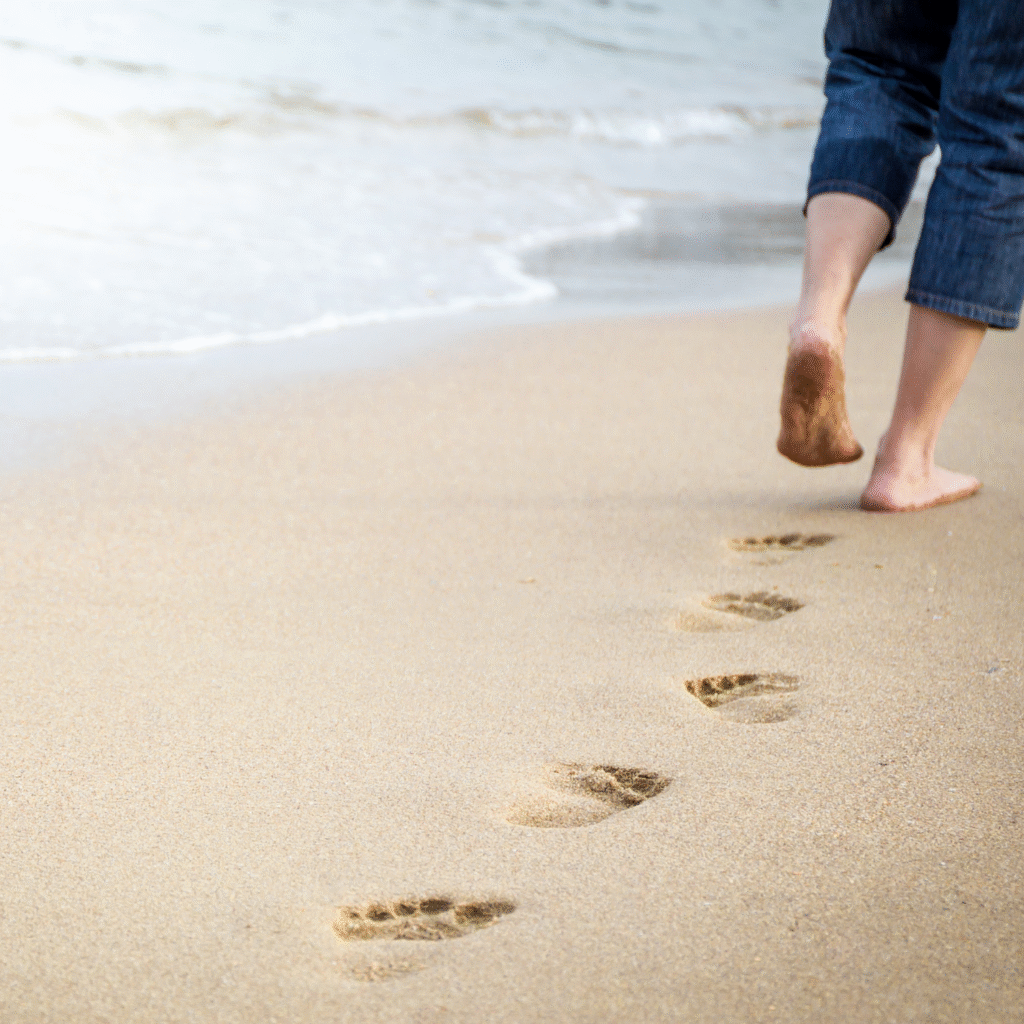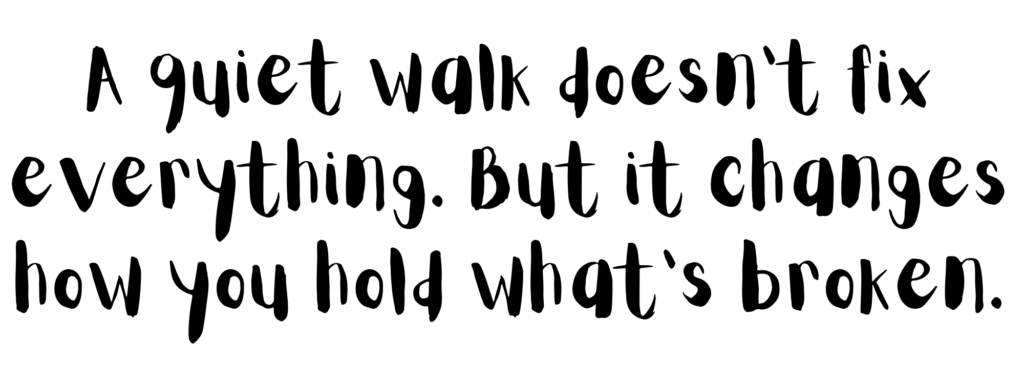Life can feel noisy — even when it’s silent. Sometimes, the noise isn’t in the room; it’s in our heads. It’s the list of things that need to be done. The arguments we replay. The decisions waiting for answers. It’s the weight of everything at once, echoing louder than any city street.
And then, in the middle of all that mental noise, a simple walk can feel like an escape — but it’s more than that. It’s a way through.
The Unusual Power of Movement
Walking doesn’t sound revolutionary. It’s not glamorous or complicated. Yet, there’s something powerful about putting one foot in front of the other, away from screens, away from constant stimulation, and into fresh air.

When you walk, your body moves, but your thoughts begin to slow. It’s as if every step gives a little more room for what’s inside you to settle. Problems that once felt tangled start to loosen. You see things from a new angle — not because the problem itself changed, but because you did.
That’s the quiet power of movement. It creates mental distance without asking you to ignore what’s hard. It helps your mind breathe.
Nature’s Subtle Therapy
A walk outdoors does something even more remarkable. You notice the way sunlight filters through the leaves. You hear the rhythm of your own footsteps. You feel the air, cool or warm, on your skin.

Without trying, you’re pulled out of the cycle of overthinking. Your attention shifts from the storm in your head to the simple reality around you. It’s a gentle reminder: life is happening beyond the noise.
Sometimes, the world feels overwhelming because we’re too close to our own thoughts. A walk in nature gives you space — a pause button without guilt. You’re still with your problem, but you’re no longer drowning in it.
Walking as a Thinking Tool
Many of history’s greatest thinkers and creators used walking as part of their process. Philosophers, writers, inventors — countless names found clarity through steps. It wasn’t magic; it was rhythm.
Walking has a way of turning chaotic thoughts into ordered ones. Like beads sliding into place, ideas you couldn’t reach while sitting at your desk suddenly appear mid-step. Questions you didn’t know how to ask begin to answer themselves.
This isn’t about escaping reality. It’s about meeting it with a clearer, calmer mind.
Why It Works When Talking Doesn’t
When life gets heavy, our first instinct is often to talk about it — to get advice, to ask for solutions, to pour it out. And sometimes, that’s exactly what we need. But other times, talking makes the noise louder.

Walking is different. You don’t have to explain. You don’t have to find the right words. You don’t have to convince anyone — not even yourself.
You just walk.
The act itself is enough to give your nervous system a break. It lowers stress hormones. It steadies your breathing. It pulls your body out of the state of “everything is urgent” and into “one step at a time.”
And in that shift, answers start to feel closer. You can see which problems are real and which are just fears disguised as facts. You realize what can wait. You feel what truly matters.
Turning a Walk into a Practice
The beautiful thing is, you don’t need special equipment, a gym membership, or an hour of free time to benefit from this. You only need intention.
Here’s how to make quiet walking a simple tool for loud problems:
1. Go alone when possible
You need space for your own thoughts. This isn’t about isolation — it’s about giving your inner voice a chance to breathe without competing with others.

2. Leave the phone behind or keep it silent.
Music and podcasts are fine sometimes, but silence has its own wisdom. Let yourself hear the sound of your steps. Let the thoughts rise and fall naturally.

3. Pick a gentle route.
You don’t have to climb mountains. A quiet street, a park, even a loop around the block will do. Familiar paths help you focus inward instead of navigating.

4. Notice, don’t judge.
Let whatever comes to mind come. Don’t force yourself to solve everything on the walk. Just notice the shift — how what felt heavy starts to feel lighter, or at least less urgent.

5. Repeat when needed.
Walking works not because of one perfect moment, but because of what it creates over time: a habit of clearing mental space, of processing gently, of approaching life with steadier footing.

The Quiet After the Noise
Often, when we’re overwhelmed, we think the answer must come through a breakthrough — a big conversation, a sudden insight, a dramatic change. But clarity often arrives quietly.
It’s in the slow rhythm of steps that you didn’t think would matter. It’s in the air filling your lungs when you finally leave the room where the thoughts were bouncing off the walls. It’s in the moment you realize that while the problem remains, you are calmer, clearer, softer with yourself — and that makes all the difference.

It helps you carry what’s heavy without letting it crush you. It reminds you that you are not stuck, even when your thoughts say you are.
Sometimes, the way out of the noise isn’t to shout over it. It’s to step into the silence — one foot, then the next — and let the answers rise in their own time.





